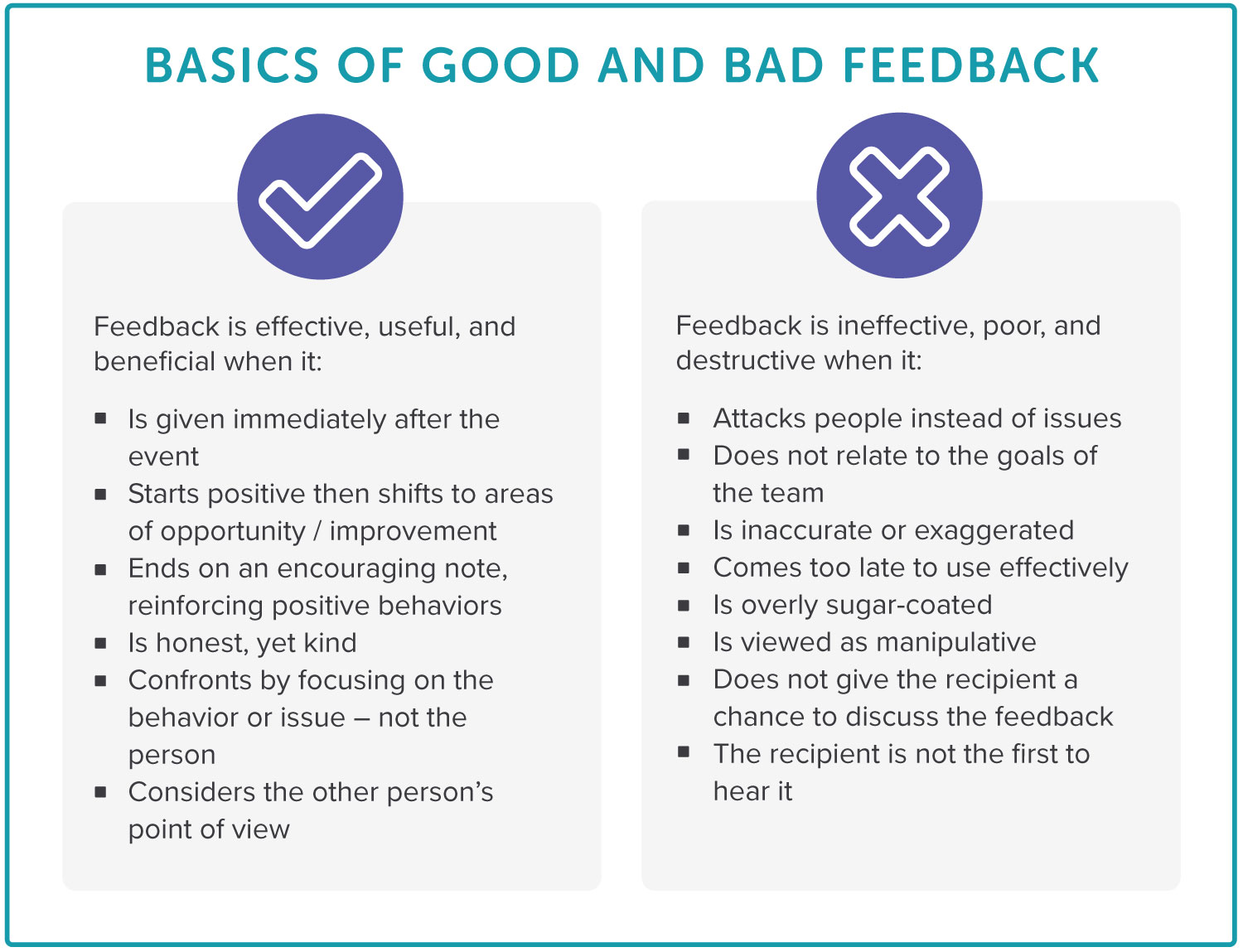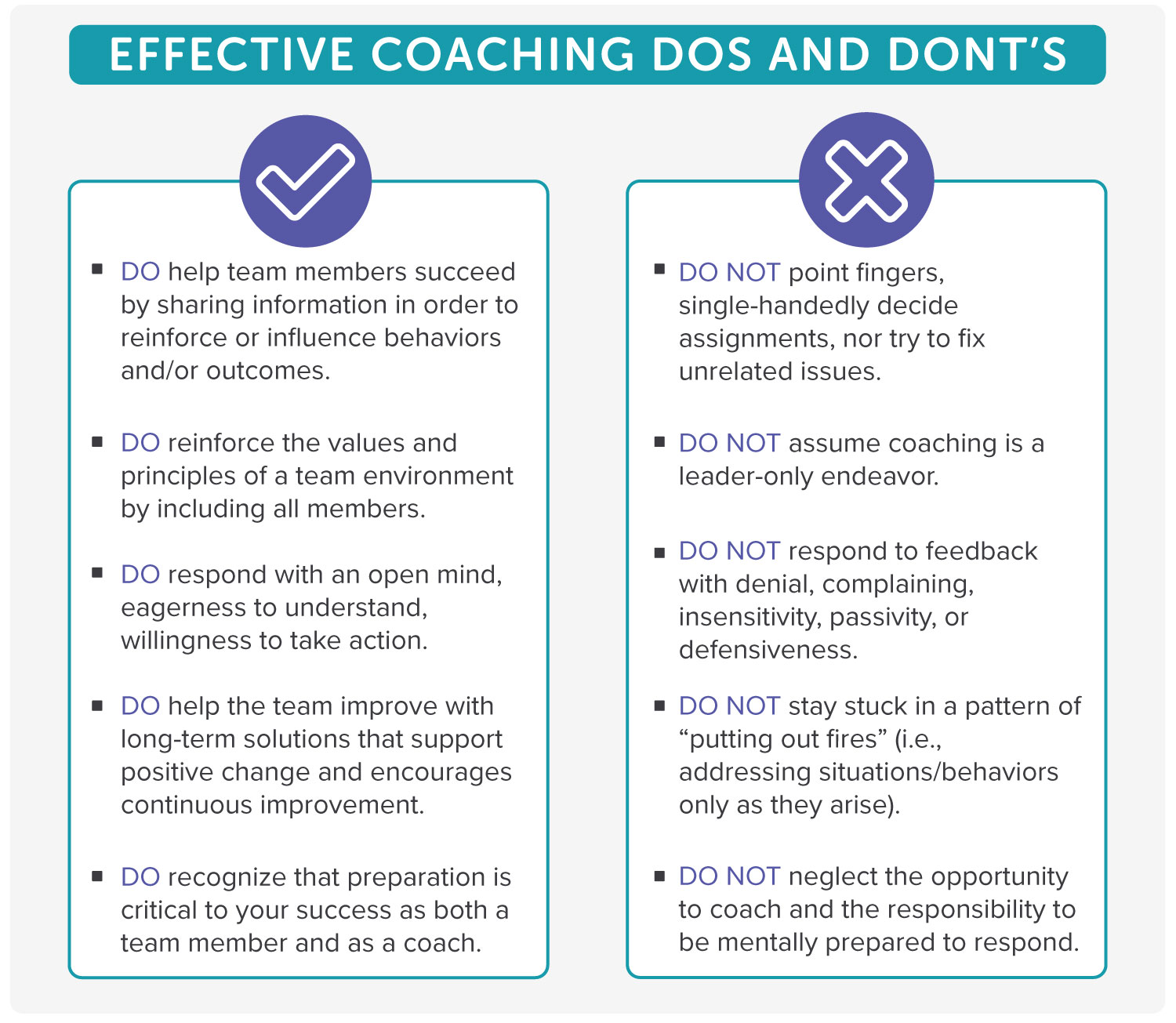SHARING CONSTRUCTIVE THOUGHTS AND OBSERVATIONS IS THE RESPONSIBILITY OF EVERY LEADER AND TEAM MEMBER.
The term “coach” may conjure up images of a whistle-wearing leader barking directions and commands at a team. I'm sure we can agree, this is not how a workplace coach should behave.
For one thing, everyone has the privilege and responsibility of coaching other team members—it's not meant to be the responsibility of a single person. Additionally, coaching is not merely telling someone what to do or how to do it better. It’s about giving and receiving feedback that’s beneficial for growth and development.
Each team member has the potential to offer effective coaching, and leaders who understand this can model the behavior for others to learn. With that in mind, let’s take a look at how coaching and feedback go hand-in-hand, how to give and receive feedback effectively, and how all of this positively impacts the organization as a whole.
COACHING THROUGH FEEDBACK
The key to positive and sustainable personal and professional development is creating a reciprocal process. We’ve learned that coaching through providing–and receiving–helpful feedback is a foundational practice for those seeking improvement.
For a sports team, the quality of the coaching can make the difference between victory and failure. Similarly, for a work team, the quality of the coaching can impact your productivity and success. To take work achievement to the next level and reach peak performance, every member needs to be both a player and a coach.
CONSTRUCTIVE FEEDBACK MATTERS
As we’ve seen, feedback is a good thing–except when it’s not. Giving helpful feedback enhances the effectiveness of individuals and the team as a whole. However, hurtful feedback is not beneficial. And, while you may have been taught to say nothing when you have nothing nice to say, this philosophy can be counter-productive. Holding your tongue in a heated moment may be wise, but eventually you'll need to find a way to say what needs to be said, as long as it’s in the best interest of both parties.
In addition to simple standards of kindness and decency, team members should consider the following guidelines when offering feedback.

It may also help to keep the purpose of feedback in mind. It can be used to correct, develop, or reinforce. Typically feedback is best shared privately, however, when it’s positive and used to reinforce desired behaviors, a public announcement may be appropriate.
When GIVING feedback, consider using these five steps.
- State the purpose of the feedback.
- Describe your observations and perceptions.
- Listen to the other person’s point of view.
- Jointly agree on the action to be taken.
- Summarize the discussion and show your appreciation.
When you’re RECEIVING feedback, take these steps to create a mutually beneficial experience.
- Listen with the intent to clearly understand the feedback.
- Ask clarifying questions or paraphrase what you believe is being communicated.
- Share your views on the situation.
- Jointly discuss and agree on possible ways to improve or change the situation.
- Express your appreciation for the other person’s efforts.
DEVELOPING YOUR COACHING STYLE
Offering useful feedback is an important skill for all team members to develop, but it’s up to leaders to set the tone. Take a few minutes to consider your current coaching style. How do you give feedback to team members? How do you respond to it personally–do you receive it with a growth mindset?
Let’s back up a step by asking a fundamental question: What’s your leadership style?
Are you control-oriented? Have you set up a rigid chain of command that has a highly bureaucratic structure with heavy layers of management? Is non-manager input invited?
Or maybe you’re commitment-oriented. Do you strive to keep a fluid and dynamic organizational structure allowing for rapid decisions and self-management? Do you encourage continual learning, growth, and feedback?
An honest assessment of your predominant management style is a good first step to help you get where you want to be. If you’re like most leaders, you’re envisioning an environment where healthy collaboration and feedback foster growth and success. We have good news for you: it’s absolutely possible, and we’re here to help.
Download our free assessment guide to find out where you are and how to move forward.
Still hungry for info? Check out these transformational insights.
- Working Together—Not Against
- The Secret Science Behind Great Teams
- An Open Letter to Leaders Who Don’t Believe in Engagement Surveys
- Want Engaged Employees? Start with Fairness.
When the way you’re working isn’t working, ORG can help. By fostering collaboration, boosting engagement, aligning goals, and implementing sustainable change, we can increase performance by two to three times your current goal—or more. Ready to work together?




